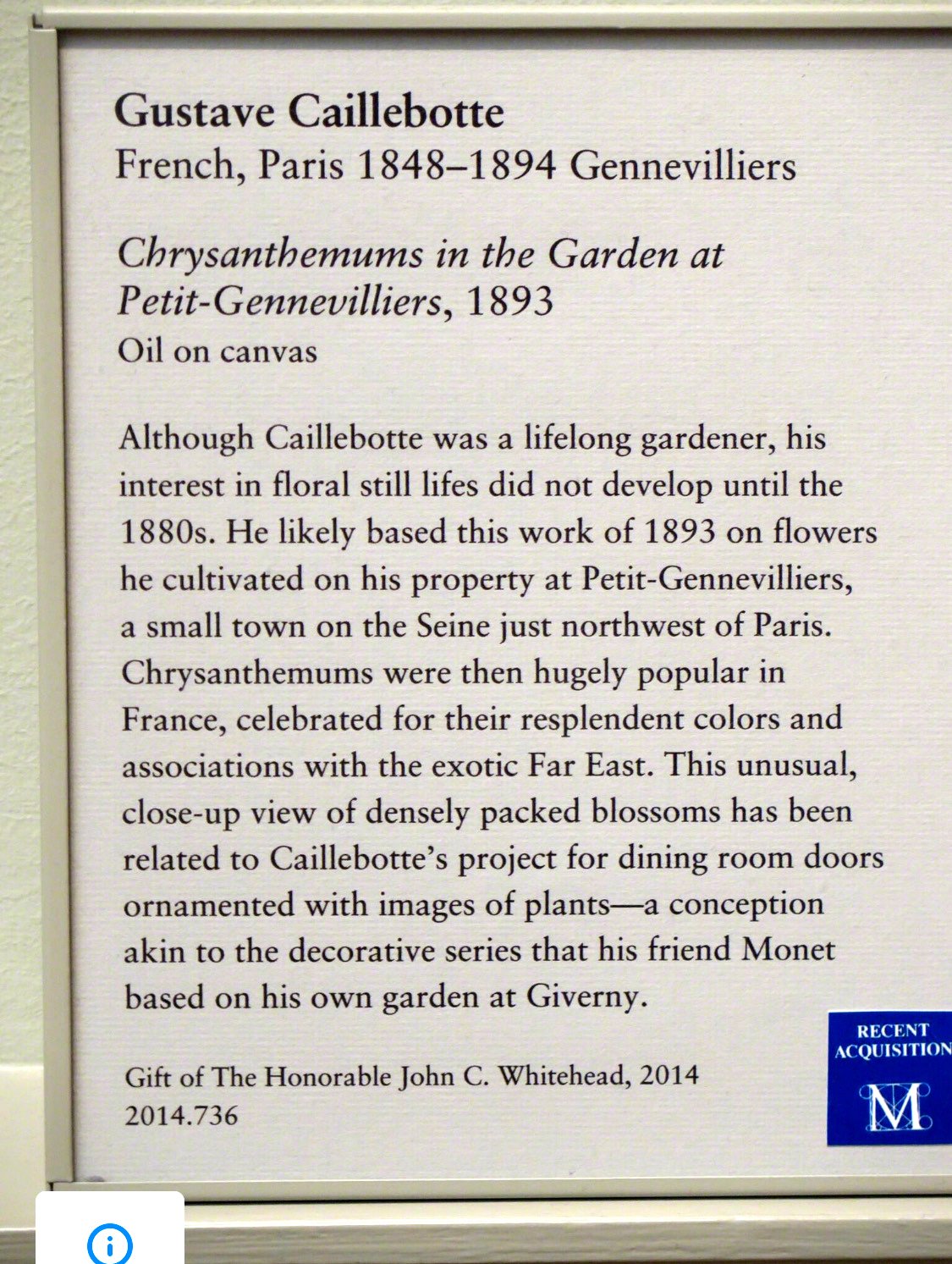GUSTAVE CAILLEBOTTE

GUSTAVE CAILLEBOTTE (1848 – 1894)
Paris Street; Rainy Day, 1877, oil on canvas, 83-1/2 x 108-3/4 in. Framed by Gill & Lagodich for the Art Institute of Chicago, May 2000, in period 19th-century French gilded wood molding frame, molding width 6.5 in. This iconic Impressionist painting was recently cleaned and restored to its original appearance. Commentary and interactive images of the recent dramatic restoration are documented here in the Wall Street Journal . "In his masterpiece, "Paris Street; Rainy Day", Gustave Caillebotte brought an unusual monumentality and compositional control to a typical Impressionist subject, the new boulevards that were changing the Paris cityscape. The result is at once real and contrived, casual and choreographed. With its curiously detached figures, the canvas depicts the anonymity that the boulevards seemed to create. By the time it appeared in the third Impressionist exhibition, held in April 1877, the artist was 29 years old, a man of considerable wealth, and not only the youngest but also the most active member of the Impressionist group. He contributed six of his own canvasses to the exhibition; played a leading part in its funding, organization, promotion, and installation; and lent a number of paintings by his colleagues that he owned." —AIC wall label. “This complex intersection, just minutes away from the Saint-Lazare train station, represents in microcosm the changing urban milieu of late nineteenth-century Paris. Gustave Caillebotte grew up near this district when it was a relatively unsettled hill with narrow, crooked streets. As part of a new city plan designed by Baron Georges-Eugène Haussmann, these streets were relaid and their buildings razed during the artist’s lifetime. In this monumental urban view, which measures almost seven by ten feet and is considered the artist’s masterpiece, Caillebotte strikingly captured a vast, stark modernity, complete with life-size figures strolling in the foreground and wearing the latest fashions. The painting’s highly crafted surface, rigorous perspective, and grand scale pleased Parisian audiences accustomed to the academic aesthetic of the official Salon. On the other hand, its asymmetrical composition, unusually cropped forms, rain-washed mood, and candidly contemporary subject stimulated a more radical sensibility. For these reasons, the painting dominated the celebrated Impressionist exhibition of 1877, largely organized by the artist himself. In many ways, Caillebotte’s frozen poetry of the Parisian bourgeoisie prefigures Georges Seurat’s luminous Sunday on La Grande Jatte—1884, painted less than a decade later.” —AIC permanent collection label. Painting: Charles H. and Mary F. S. Worcester Collection
In 2011, the painting was taken off view for conservation, and the empty frame was left as a placeholder in the gallery — an invitation to visitors to pose for their own masterpieces.








GUSTAVE CAILLEBOTTE (1848–1894)
Chrysanthemums in the Garden at Petit-Gennevilliers, 1893, oil on canvas, 38-5/8” x 23-1/2” Framed by Gill & Lagodich for the Metropolitan Museum. Custom-made replica frame, c. 1890s Degas-style painting frame, molding width 3-7/8” “Although Caillebotte was a lifelong gardener, his interest in floral subjects did not develop until the 1880s. This work of 1893 depicts flowers that he cultivated on his property at Petit-Gennevilliers, a small town on the Seine just northwest of Paris. Chrysanthemums were hugely popular in France, celebrated for their resplendent colors and associations with East Asia, whose arts and cultures were greatly admired by Europeans. This unusual, close-up view of densely packed blossoms has been related to Caillebotte’s project for dining room doors ornamented with images of plants—a conception akin to the decorative series that his friend Monet based on his own garden at Giverny.” —Met Museum label Painting Gift of the Honorable John C. Whitehead, 2014.


